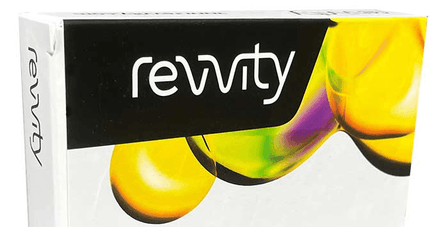Introduction
Ribosome profiling (Ribo seq) has changed our view of translation by sequencing the ~28 to 30 nucleotide fragments that are protected when ribosomes are arrested on messenger RNA¹. Because each "footprint" corresponds to an active ribosome, Ribo seq pinpoints translated open reading frames, start site choice and elongation speed with codon scale resolution. In previous blogs we have discussed common methods in use to perform Ribo-Seq, and the use of Small RNA sequencing for downstream profiling of the fragments obtained.
While Ribo-seq is great to understand ongoing translation, it is blind to the transcripts that are still being synthesized by RNA polymerase II, not yet exported, or not yet loaded onto a ribosome. To fill this gap investigators turn to nascent RNA sequencing, a family of techniques that trap RNA polymerase II in the act of transcription. In this blog we will provide a summary of these techniques and when to choose each of them.
Nascent assays fall into three classes. Nuclear run on methods ask isolated nuclei to incorporate labelled nucleotides for a few seconds; immunoprecipitation methods capture Pol II together with the RNA it already carries; and chromatin bound RNA protocols extract every RNA still tethered to chromatin regardless of polymerase association. Together they provide a time and nucleotide resolved view of transcription that complements Ribo seq and conventional steady state RNA seq.
 NEXTFLEX Rapid Directional RNA-Seq Kit 2.0
Discover
Despite its differences, all of them have in common that once the RNA fragments are isolated, they need to be processed downstream using a Small RNA sequencing
NEXTFLEX Rapid Directional RNA-Seq Kit 2.0
Discover
Despite its differences, all of them have in common that once the RNA fragments are isolated, they need to be processed downstream using a Small RNA sequencing
 NEXTFLEX Small RNA Sequencing Kit V4
Discover
workflow.
NEXTFLEX Small RNA Sequencing Kit V4
Discover
workflow.
Nuclear run on methods
In Global Run On sequencing (GRO seq) nuclei are supplemented with brominated UTP that labels the 3' ends; only elongation competent Pol II complexes extend their transcripts, and the freshly labelled RNA is purified via anti BrdU resin2. A later variant, Precision Run On sequencing (PRO seq), changes the substrate to biotin 11 NTPs that stall the polymerase after a few nucleotides, freezing the exact 3' end of each nascent RNA and mapping promoter proximal pause sites at single nucleotide resolution.3,4 Mahat et al. applied PRO seq to K562 cells exposed to heat shock and showed genome wide pause release within five minutes, ahead of bulk transcriptional up regulation5.
More recently fastGRO replaced brominated bases with 4 thiouridine and a click chemistry capture, trimming the entire workflow to 2-3 days while allowing as few as 500, 000 cells to be profiled.6
Immunoprecipitation methods
Native Elongating Transcript sequencing (NET seq) isolates the polymerase-RNA complex physically. Micrococcal nuclease (MNase) fragments chromatin, and an antibody against the RPB1 subunit of Pol II pulls down the enzyme together with the 17 to 100 nucleotide RNA that protrudes from its exit channel. The 3' end of each read reflects the active site with nucleotide precision. A plant adapted version, pNET seq, revealed that different phosphorylation states of the Pol II C terminal domain (CTD) travel at distinct speeds through Arabidopsis genes.8,9
Because standard NET seq requires millions of cells, Zhu et al. developed ChrNET, which sonicates crude chromatin instead of purifying nuclei and therefore recovers more complexes from scarce plant tissues⁹. For full length insight, POINT seq couples Pol II immunoprecipitation to fragmentation and Illumina sequencing, whereas POINT nano skips fragmentation and sequences intact kilobase scale nascent RNA on Oxford Nanopore, directly linking promoter choice to downstream polyadenylation within single molecules10. One caveat of this assay is the ~5–10 % raw ONT error rate, which can still obscure single-nucleotide pause sites even after polishing.
Chromatin bound RNA-seq methods
Some questions do not require nucleotide precision but instead demand to know every RNA that is still tethered to chromatin, including splice intermediates, read through tails and non-coding species. Chromatin Bound RNA seq (CB RNA seq) simply extracts RNA from pelleted chromatin with phenol, bypassing antibodies or specialized nucleotides. It captures Pol II as well as Pol I/III and mitochondrial transcripts. 3'CB RNA seq adds an adapter ligation step to exposed 3' hydroxyl groups, enriching cleavage products and lariat branches.11
| Method | Main strengths | Typical weaknesses | |
|---|---|---|---|
| Nuclear run-on | GRO seq | Captures polymerase direction genome wide; enhancer friendly | ~30 nt positional blur; mixed polymerases, Pol I & Pol III signal can be filtered bioinformatically |
| PRO seq | Nucleotide precision of 3' ends | More steps, higher cost | |
| fastGRO | 2–3-day workflow; ≥500 000 cells | Slightly lower signal/noise | |
| Immunoprecipitation | NET seq | Single nt active site map; splice coupled | Requires >10⁶ cells |
| ChrNET | Low input, plant friendly | Antibody quality critical | |
| POINT nano | Full length nascent isoforms | Nanopore error rate | |
| Chromatin-bound RNA-seq | CB RNA seq | Simple, unbiased capture | Limited temporal resolution (mixture of molecules from minutes to hours old) |
| 3'CB | Enriches cleavage & lariat ends | Loses 5' context |
Table 1. Summary of methods discussed, showing their main strengths and weaknesses.
Preparing nascent fragments for small RNA libraries
Most nascent protocols produce RNA fragments with a size suitable for the NEXTFLEX® Small RNA seq kit. Like in the case of Ribo-seq, after size selection, one must convert the fragment ends to a 5' monophosphate and 3' hydroxyl.
Run-on fragments retain either a 5' m7G cap (if full length) or a 5' triphosphate (if start sites are downstream of the cap). After fragmentation they often harbour a 5' monophosphate and a clean 3' hydroxyl; if 5' m7G cap is present use RppH for decapping, then calf intestinal phosphatase to decap followed by T4 polynucleotide kinase plus ATP.
MNase digested fragments contain a 5' hydroxyl and a 3' phosphate. In this case a two step T4 polynucleotide kinase reaction removes the phosphate in the absence of ATP and then adds a 5' phosphate in its presence. CB derived RNA tends to be ready once it is trimmed to length, and 3'CB fragments already possess the correct ends.
An optional but increasingly popular improvement is addition of a ribosomal RNA depletion step using riboPOOL® kits . Because nascent RNA preparations still contain sizeable amounts of pre rRNA and ribosomal footprints, hybrid capture removal prior to adapter ligation can boost the fraction of uniquely mapping reads by an order of magnitude. Xie et al. observed a jump from 1 % to 16 % uniquely mapped reads in wheat GRO seq libraries when a pan plant riboPOOL preceded construction with the NEXTFLEX™ Small RNA seq kit12. Chen et al. subsequently codified the workflow into a STAR Protocol, reporting that the same depletion step roughly halved the required sequencing depth while preserving enhancer signal13. The biotin–streptavidin cleanup is chemically orthogonal to the T4 PNK reaction, but trace bead carry over can inhibit the kinase; a quick phenol–chloroform extraction is therefore recommended before end repair.
References
- Ingolia T, et al (2009). Genome-wide analysis in vivo of translation with nucleotide resolution using ribosome profiling. Science. 324(5924):218-23. doi: 10.1126/science.1168978.
- Barbieri E, et al (2020). Rapid and Scalable Profiling of Nascent RNA with fastGRO. Cell Rep. 33(6):108373. doi: 10.1016/j.celrep.2020.108373.
- Mimoso CA, Goldman SR. (2023) PRO-seq: Precise Mapping of Engaged RNA Pol II at Single-Nucleotide Resolution. Curr Protoc. 3(12):e961. doi: 10.1002/cpz1.961.
- Kwak, H., et al (2013). Precise maps of RNA polymerase reveal how promoters direct initiation and pausing. Science 339: 950 953.https://doi.org/10.1126/science.1229386.
- Mahat, D.B., et al (2016). Mammalian heat shock response and mechanisms underlying its genome wide transcriptional regulation. Molecular Cell 62: 63 78. https://doi.org/10.1016/j.molcel.2016.02.025.
- Rahman, S., et al. (2020). fastGRO: rapid profiling of nascent RNA for scalable transcriptomics. Cell Reports 33: 108540. doi:10.1016/j.celrep.2020.108540.
- Mayer, A., et al. (2015). Native elongating transcript sequencing reveals human transcriptional activity at nucleotide resolution. Cell 161: 541 554. doi: 10.1016/j.cell.2015.03.010.
- Zhu, J., (2018). RNA polymerase II activity revealed by GRO-seq and pNET-seq in Arabidopsis. Nature Plants, 4, 1112–1123. doi:10.1038/s41477-018-0297-1
- Zhu, B., et al. (2023). Comparative analysis of nascent RNA seq strategies in Arabidopsis reveals method specific biases. The Plant Cell 35: 4197 4216. doi: 10.1093/plcell/koad273.
- Rui S.,L., et al (2021). POINT technology illuminates the processing of polymerase-associated intact nascent transcripts, Molecular Cell, 81(9), 1935-1950.e6, doi:10.1016/j.molcel.2021.02.034.
- Liu M, et al (2023). Comparative analysis of nascent RNA sequencing methods and their applications in studies of cotranscriptional splicing dynamics. Plant Cell. 35(12):4304-4324. doi: 10.1093/plcell/koad237.
- Xie, Y., Chen, Y., Li, Z. et al. Enhancer transcription detected in the nascent transcriptomic landscape of bread wheat. Genome Biology 23: 109 (2022). https://doi.org/10.1186/s13059 022 02675 1
- Chen, Y., Zhu, J., Xie, Y. et al. Protocol for affordable and efficient profiling of nascent RNAs in bread wheat using GRO seq. STAR Protocols 3(3): 101657 (2022). https://doi.org/10.1016/j.xpro.2022.101657.

































